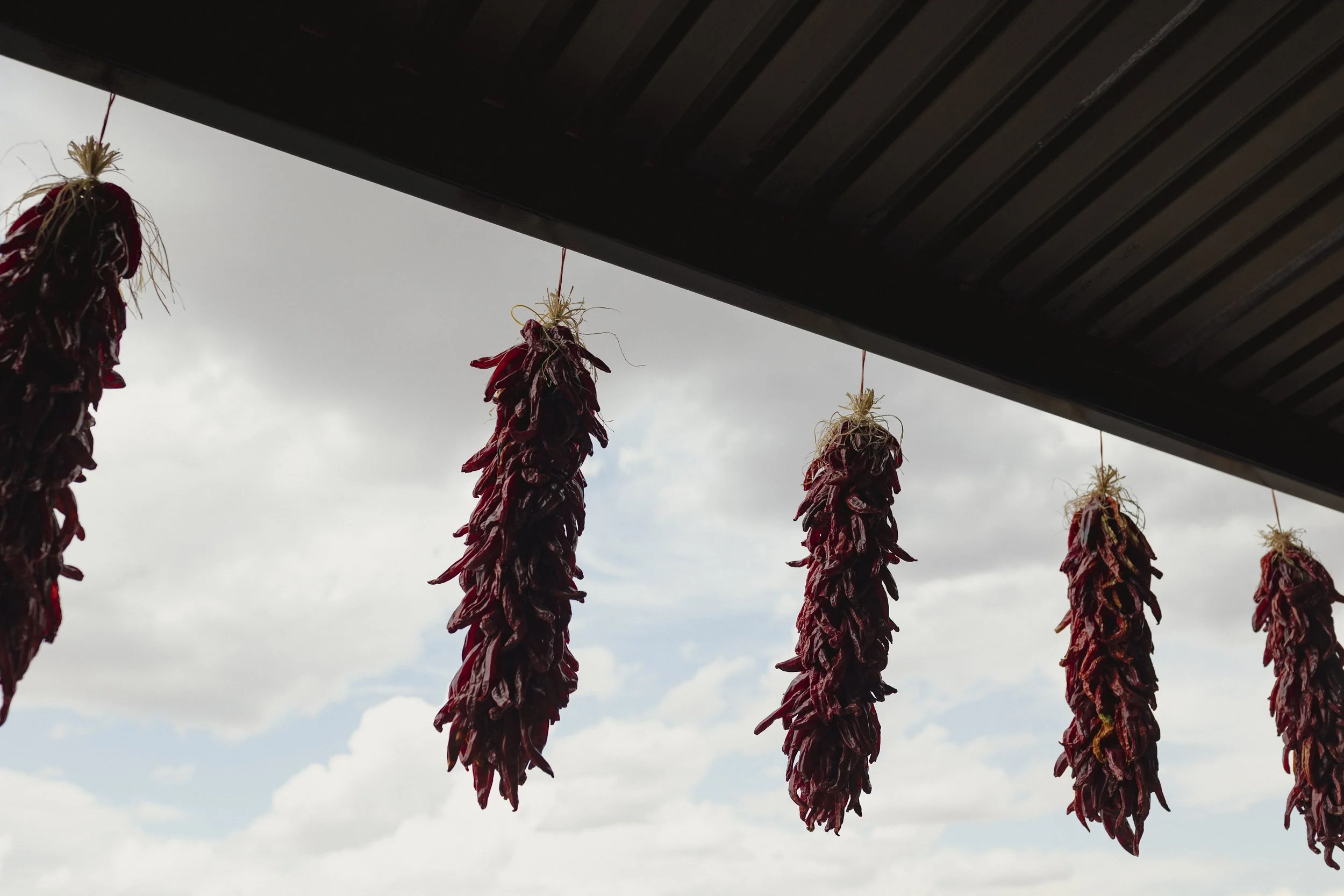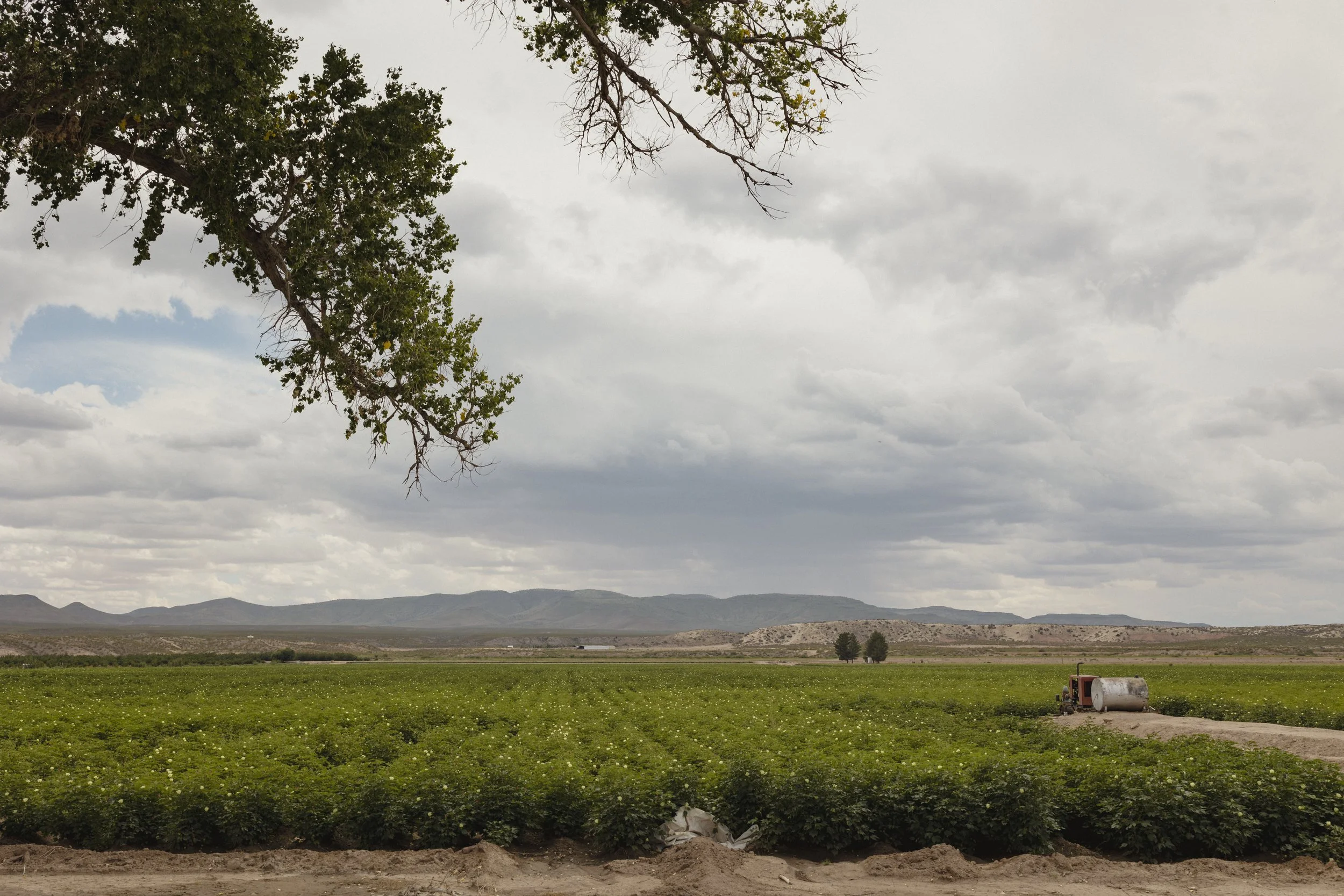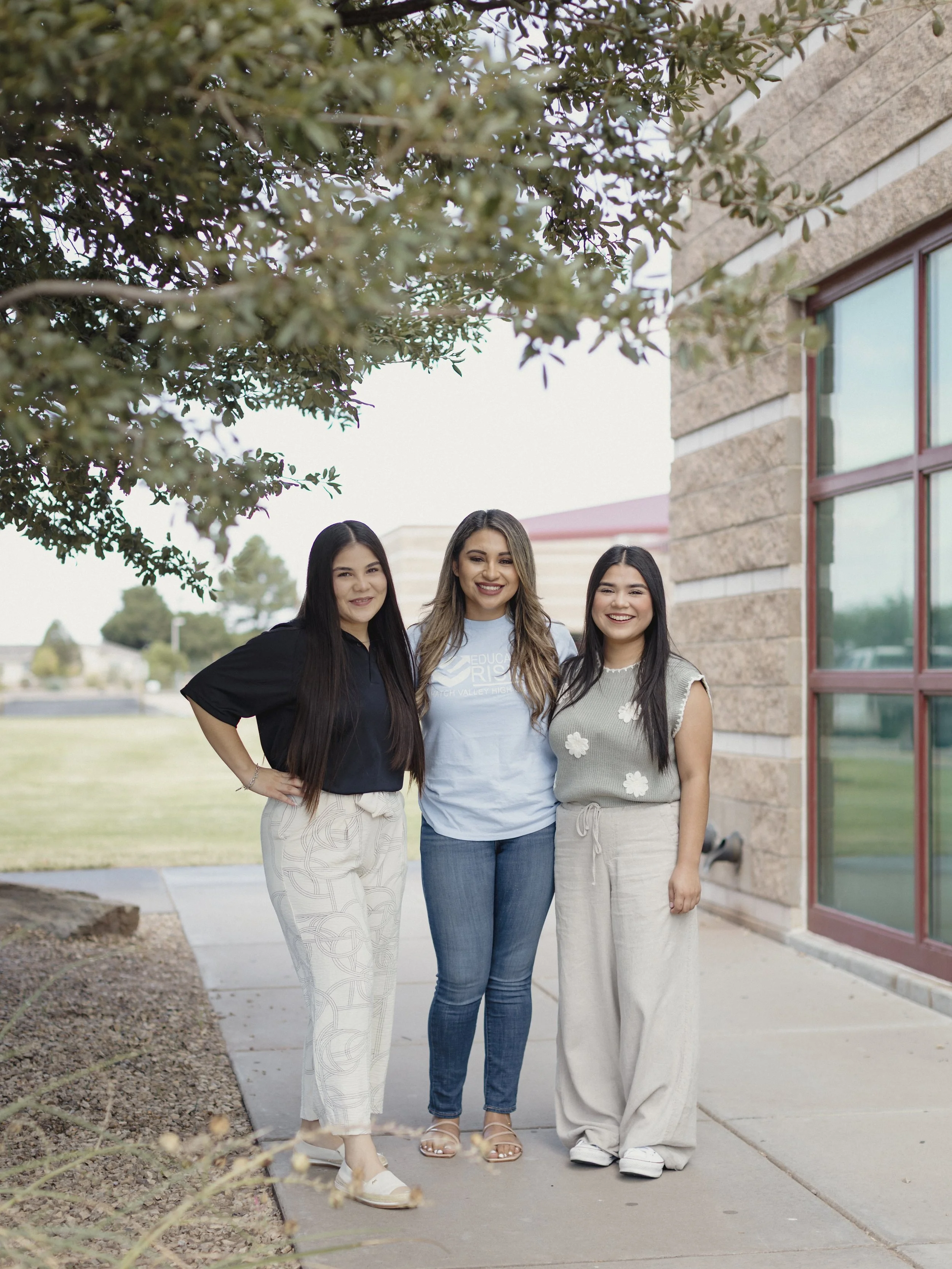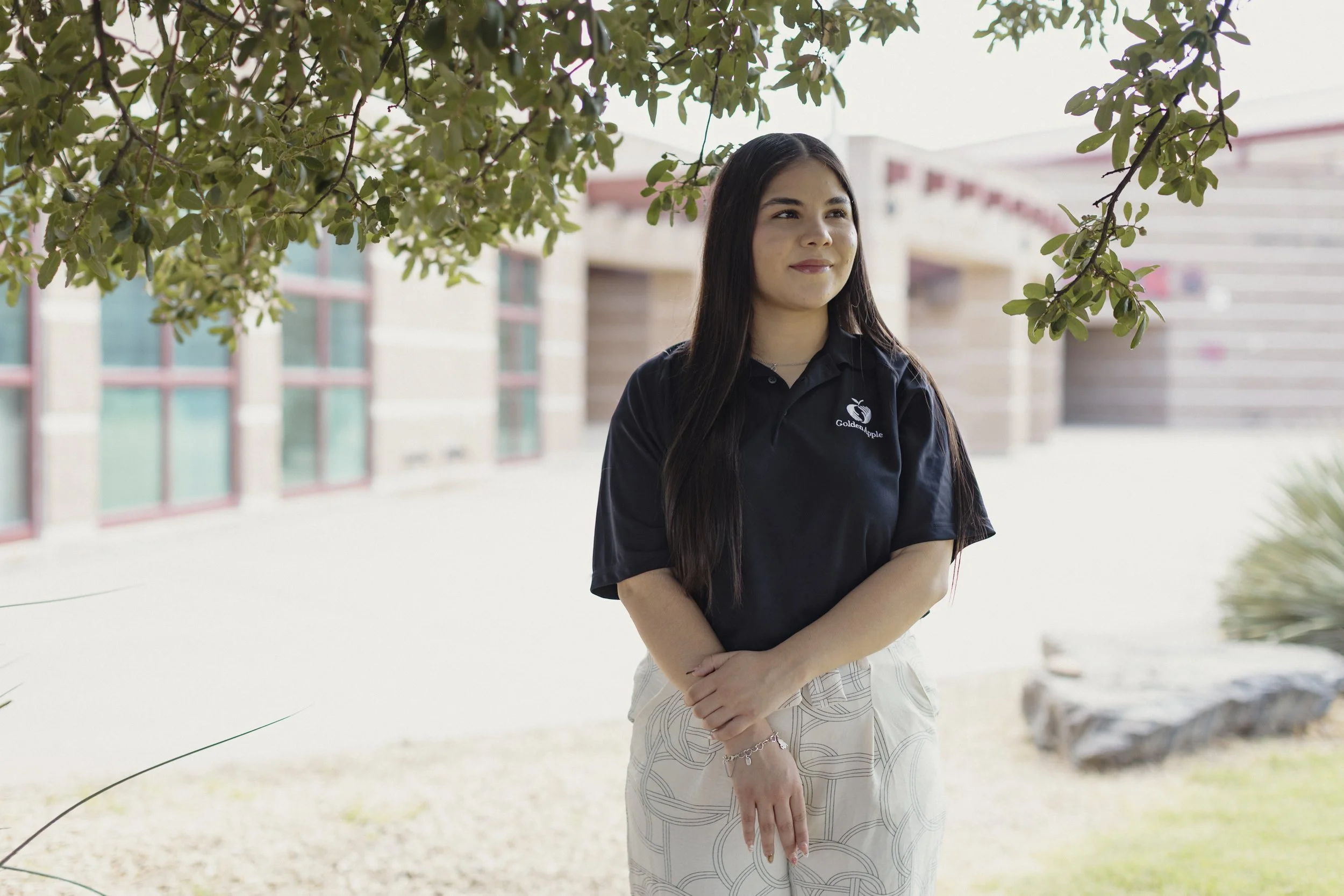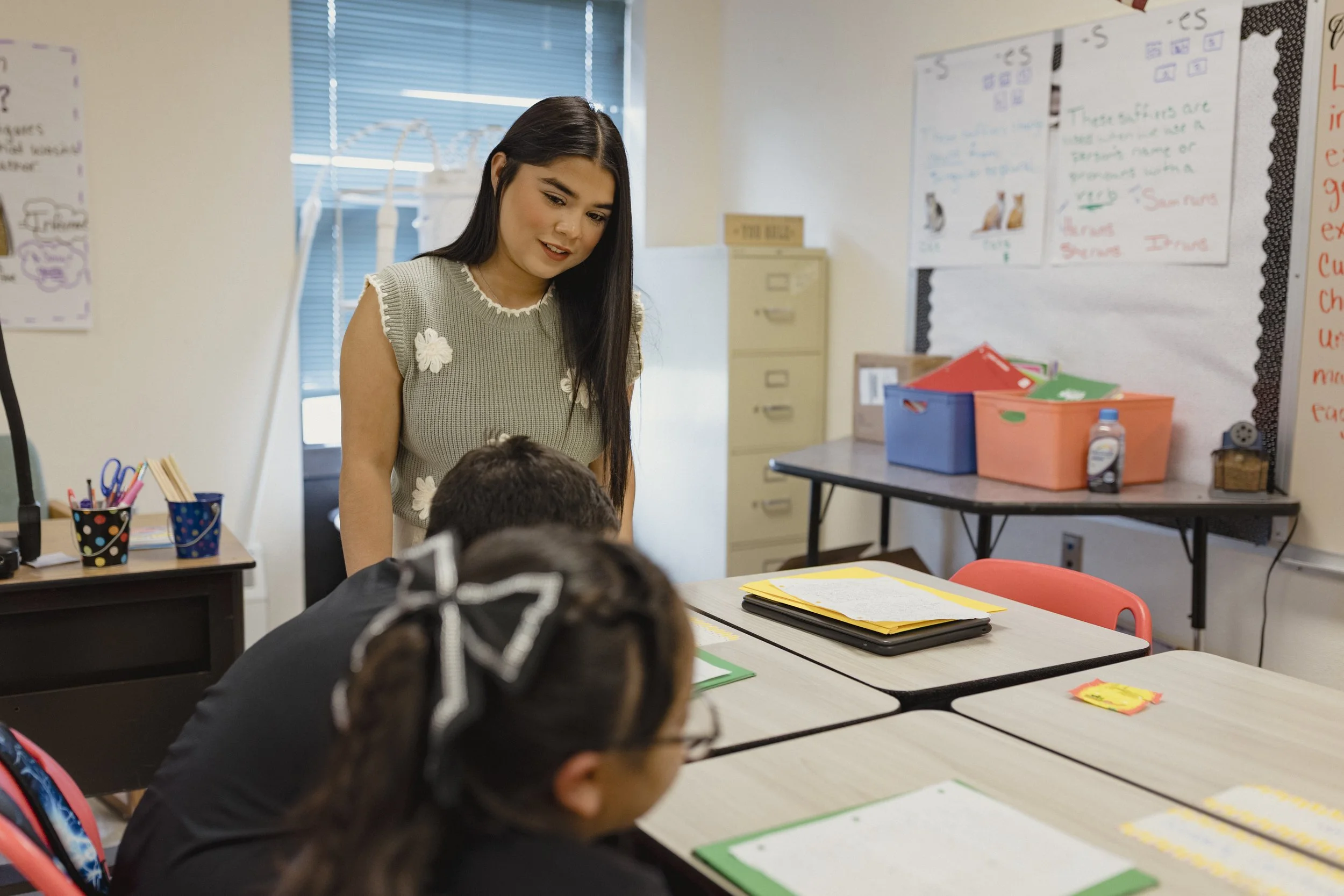Hatch, New Mexico: Nurturing a homegrown crop of new teachers
Something fresh and exciting is growing amidst the fertile green chile fields of Hatch, N.M.: a passionate crop of new teachers.
It all started with Maria Gomez. A 2012 graduate of Hatch Valley High School, Gomez returned to her alma mater to teach after college. As the head of the school’s teacher academy and teacher practicum, Gomez made it her mission to support other aspiring educators — and to encourage them to stay in the community. Her efforts have sparked a cycle of inspiration that’s benefiting schools — and students — in a region in dire need of educators.
In 2025, New Mexico logged 604 teacher vacancies across the state, including 51 vacancies in the southwest region, which includes Hatch. Rural communities often experience more vacancies per capita than their urban counterparts, thanks to housing shortages, lower salaries, and difficulty attracting out-of-towners to work in remote areas.
Gomez, who also teaches family and consumer sciences, decided to do something about it. With the support of the Golden Apple Scholars Program of New Mexico and Educators Rising, Gomez has paid her love of teaching forward. So far, nine students in this community of 2,000 residents have enrolled in the Scholars program. And in fact, one-third of all Golden Apple Scholars in Doña Ana County come from Hatch.
This fall, two of those students will begin substitute teaching at nearby Hatch Elementary School.
From the Fields to the Classroom
Carlos Carranza was the first Hatch student to join the Golden Apple Scholars Program, a teacher preparation program that supports aspiring educators with professional development, ongoing mentorship, and up to $15,000 in stipends throughout their undergraduate careers. Golden Apple’s goal is to get more teachers like Carranza and Gomez to return to their hometowns to teach.
Since signing on with the program, Carranza has joined Gomez in funneling other aspiring local teachers to Golden Apple.
“Ms. Gomez was a big reason I applied to Golden Apple,” says Carlos Carranza, an HVHS graduate who is pursuing a teaching degree from Western New Mexico University. When Gomez heard Carranza was interested in a career in education, she connected him with Golden Apple. “She still checks on me to this day,” he says.
Gomez herself returned to Hatch after getting degrees from New Mexico State University and Eastern New Mexico University, in part thanks to the encouragement of her own HVHS teacher, Ms. Trujillo. Today, the two are close friends and colleagues who teach across the hall from each other—an experience she describes as “surreal.” Gomez hopes the same will soon be true of her own students.
Research suggests that students who learn from someone who understands their community and culture fare better academically. And a shared identity is not just better for students, it’s better for teachers as well.
“Being able to identify with the students in your classroom gives you more connection and purpose,” explains Gomez. She wants her students to be proud of their hometown and background, and to know they have more options than they might think.
“I tell my students, ‘Just because you have worked in the fields all your life, and just because your parents were not able to get a higher education or even graduate high school, doesn't mean that you have to go on the same path,’” she says.
Gomez, who also worked in the fields growing up, was the first in her family to graduate from both high school and college. She says she relates deeply to what her students go through—from growing up speaking Spanish as their native language to balancing school and work responsibilities.
“We do have limited resources here. But we also have a lot of community support, especially when it comes to education,” says Gomez. “I tell my students: ‘It's your decision if you want to go to college or not.” And programs like Golden Apple make it a lot easier to go.
Hatch may be a working-class community with limited wealth, but its people show a deep commitment to one another and to the town’s youth, Carranza says. While Hatch chile is famous for good reason, “not as many people know about the people here—not just our struggles, but our sense of community,” he says.
Coming Home to Teach
This fall, Golden Apple Scholars Daisy Chairez and Maria Santoyo will return to their hometown to walk the familiar hallways of Hatch Valley Elementary School — this time as substitute teachers. They, too, were inspired by Gomez and encouraged by Carranza.
Chairez, who worked in the chile and onion fields from age 15, says she initially joined various teaching classes and clubs “just to try it out,” but quickly realized she loved working with children. She credits Gomez’s mentorship—and the support of her teachers, peers, and even her coworkers in the fields—for keeping her motivated to go to college and pursue her passion.
“I think a lot of students in Hatch are scared to try going to college,” says Chairez. “Or, they don’t know about many of the opportunities that are out there.”
“A lot of our students don’t believe they're college-bound because we come from Hatch,” adds Gomez. “That's what they say to me — ‘because we're from Hatch.’”
By going to college and returning to teach, Golden Apple Scholars are showing the younger generation they have options. After her stint as a substitute and earning her degree, Chairez plans to return to Hatch to teach full-time. She likes the small, tight-knit community and wants to help her students feel excited to learn.
Santoyo grew up in Hatch, not speaking English, and at first, she didn’t like school. “It always seemed like the bilingual kids had to do testing while the other kids got to play,” she says. But that changed in 3rd grade, when she had a teacher who made learning fun and who didn’t make her feel bad for being in the bilingual class. The teacher’s name was Ms. Barelas, and after two years in her class, Santoyo loved school. When she got to high school, she decided to try out teaching. Taking Gomez’s class solidified her career choice. As a high school student, she even got the chance to intern for her favorite teacher, Ms. Barelas, an experience she found incredibly rewarding.
Chairez and Santoyo have already gained extensive classroom experience through Golden Apple and have even competed in state and national competitions with their bilingual lesson plans. Both are determined to return to Hatch as full-time bilingual teachers.
“New Mexico has a unique need for bilingual educators—not only in Spanish, but also in various Native American languages,” Gomez says. Yet many students risk losing their native tongues due to a lack of practice, shame, or fear of making mistakes.
The Golden Apple Scholars Program works to counter this loss by centering bilingual education and uplifting local educators. In doing so, they help preserve cultural and linguistic heritage.
The Golden Apple Scholars program is helping make this cycle possible. By identifying and supporting students like Chairez, Santoyo, and Carranza, Golden Apple not only prepares them to thrive in the classroom but also empowers them to return to communities like Hatch, where teachers are needed most. In a state facing hundreds of teacher vacancies with a critical demand for bilingual educators, Golden Apple’s impact is already visible: turning local talent into local leadership.

